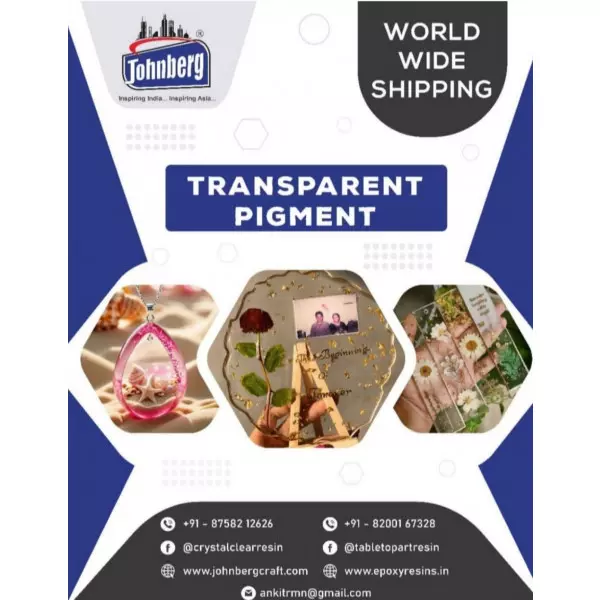Transfarant Pigment Manufacturers In Ratanpur
Details of Epoxy Pigment
Transparent Pigment Explanation
Transparent pigments are colorants that allow light to pass through them. They do not completely block the surface beneath them. Instead, they add color while still showing details or textures below the painted layer.
Key Features of Transparent Pigments
Light Transmission These pigments let some light pass through the color layer. This makes them useful for glazing and layering effects in art.
Color Mixing Transparent pigments mix well with other colors. When layered, they can create rich and deep tones without losing clarity.
Application in Art Artists use transparent pigments to build up color gradually. This helps in achieving depth, light effects, and realistic shading.
Common Mediums These pigments are found in watercolors, oils, acrylics, inks, and stains. They are especially popular in watercolor painting where transparency is a core technique.
Pigment Types Some natural and synthetic pigments are naturally transparent. Examples include phthalo blue, alizarin crimson, and quinacridone colors.
Surface Interaction When used on a white or light surface, the color appears brighter. On dark surfaces, the effect may be more subtle or may require multiple layers.
Uses of Transparent Pigments
- Glazing in oil or acrylic painting
- Layering in watercolor techniques
- Tinting or staining wood or fabric
- Creating luminous effects in digital and traditional art

